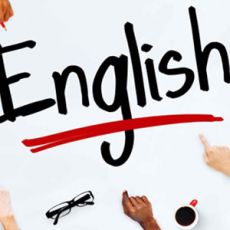1400 câu trắc nghiệm Đọc hiểu Tiếng Anh có đáp án cực hay
Chọn hình thức trắc nghiệm (10 câu/60 phút)
Chọn phần
-
Câu 1:
According to the passage, all of the following contributed to the spread of English around the world except ..............
Over the past 600 years, English has grown from a language of few speakers to become the dominant language of international communication. English as we know it today emerged around 1350, after having incorporated many elements of French that were introduced following the Norman invasion off 1066. Until the 1600s, English was, for the most part, spoken only in England and had not expanded even as far as Wales, Scotland, or Ireland. However, during the course of the next two century, English began to spread around the globe as a result of exploration, trade (including slave trade), colonization, and missionary work. Thus, small enclaves of English, speakers became established and grew in various parts of the world. As these communities proliferated, English gradually became the primary language of international business, banking, and diplomacy.
Currently, about 80 percent of the information stored on computer systems worldwide is in English. Two thirds of the world's science writing is in English, and English is the main language of technology, advertising, media, international airport, and air traffic controllers.
Today there are more than 700 million English users in the world, and over half of these are non- native speakers, constituting the largest number of non-native users than any other language in the world.
A. the slave trade
B. the Norman invasion
C. missionaries
D. colonization
-
Câu 2:
In the second paragraph, the word "stored" is closest in meaning to ............
Over the past 600 years, English has grown from a language of few speakers to become the dominant language of international communication. English as we know it today emerged around 1350, after having incorporated many elements of French that were introduced following the Norman invasion off 1066. Until the 1600s, English was, for the most part, spoken only in England and had not expanded even as far as Wales, Scotland, or Ireland. However, during the course of the next two century, English began to spread around the globe as a result of exploration, trade (including slave trade), colonization, and missionary work. Thus, small enclaves of English, speakers became established and grew in various parts of the world. As these communities proliferated, English gradually became the primary language of international business, banking, and diplomacy.
Currently, about 80 percent of the information stored on computer systems worldwide is in English. Two thirds of the world's science writing is in English, and English is the main language of technology, advertising, media, international airport, and air traffic controllers.
Today there are more than 700 million English users in the world, and over half of these are non- native speakers, constituting the largest number of non-native users than any other language in the world.
A. bought
B. saved
C. spent
D. valued
-
Câu 3:
According to the passage, approximately how many non-native users of English are there in the world today?
Over the past 600 years, English has grown from a language of few speakers to become the dominant language of international communication. English as we know it today emerged around 1350, after having incorporated many elements of French that were introduced following the Norman invasion off 1066. Until the 1600s, English was, for the most part, spoken only in England and had not expanded even as far as Wales, Scotland, or Ireland. However, during the course of the next two century, English began to spread around the globe as a result of exploration, trade (including slave trade), colonization, and missionary work. Thus, small enclaves of English, speakers became established and grew in various parts of the world. As these communities proliferated, English gradually became the primary language of international business, banking, and diplomacy.
Currently, about 80 percent of the information stored on computer systems worldwide is in English. Two thirds of the world's science writing is in English, and English is the main language of technology, advertising, media, international airport, and air traffic controllers.
Today there are more than 700 million English users in the world, and over half of these are non- native speakers, constituting the largest number of non-native users than any other language in the world.
A. a quarter million
B. half a million
C. 350 million
D. 700 million
-
Câu 4:
The passage mainly discusses Rachel Carson’s work ............
Rachel Carson was born in 1907 in Springsdale, Pennsylvania. She studied biology at college and zoology at Johns Hopkins University, where she received her master’s degree in 1933. In 1936, she was hired by the U.S. Fish and Wildlife Service, where she worked most of her life.
Carson’s first book, Under the Sea Wind, was published in 1941. It received excellent reviews, but sales were poor until it was reissued in 1952. In that year she published The Sea Around Us, which provided a fascinating look beneath the ocean’s surface, emphasizing human history as well as geology and marine biology. Her imagery and language had a poetic quality. Carson consulted no less than 1,000 printed sources. She had voluminous correspondence and frequent discussions with experts in the field. However, she always realized the limitations of her nontechnical readers.
In 1962, Carson published Silent Spring, a book that sparked considerable controversy. It proved how much harm was done by the uncontrolled, reckless use of insecticides. She detailed how they poison the food supply of animals, kill birds and fish, and contaminate human food. At the time, spokesmen for the chemical industry mounted personal attacks against Carson and issued propaganda to indicate that her findings were flawed. However, her work was proved by a 1963 report of the President’s Science Advisory Committee.
(Source: TOEFL Reading)
A. as a researcher
B. at college
C. at the U.S. Fish and Wildlife Service
D. as a writer
-
Câu 5:
According to the passage, what did Carson primarily study at Johns Hopkins University?
Rachel Carson was born in 1907 in Springsdale, Pennsylvania. She studied biology at college and zoology at Johns Hopkins University, where she received her master’s degree in 1933. In 1936, she was hired by the U.S. Fish and Wildlife Service, where she worked most of her life.
Carson’s first book, Under the Sea Wind, was published in 1941. It received excellent reviews, but sales were poor until it was reissued in 1952. In that year she published The Sea Around Us, which provided a fascinating look beneath the ocean’s surface, emphasizing human history as well as geology and marine biology. Her imagery and language had a poetic quality. Carson consulted no less than 1,000 printed sources. She had voluminous correspondence and frequent discussions with experts in the field. However, she always realized the limitations of her nontechnical readers.
In 1962, Carson published Silent Spring, a book that sparked considerable controversy. It proved how much harm was done by the uncontrolled, reckless use of insecticides. She detailed how they poison the food supply of animals, kill birds and fish, and contaminate human food. At the time, spokesmen for the chemical industry mounted personal attacks against Carson and issued propaganda to indicate that her findings were flawed. However, her work was proved by a 1963 report of the President’s Science Advisory Committee.
(Source: TOEFL Reading)
A. oceanography
B. zoology
C. literature
D. history
-
Câu 6:
When she published her first book, Carson was closest to the age of .........
Rachel Carson was born in 1907 in Springsdale, Pennsylvania. She studied biology at college and zoology at Johns Hopkins University, where she received her master’s degree in 1933. In 1936, she was hired by the U.S. Fish and Wildlife Service, where she worked most of her life.
Carson’s first book, Under the Sea Wind, was published in 1941. It received excellent reviews, but sales were poor until it was reissued in 1952. In that year she published The Sea Around Us, which provided a fascinating look beneath the ocean’s surface, emphasizing human history as well as geology and marine biology. Her imagery and language had a poetic quality. Carson consulted no less than 1,000 printed sources. She had voluminous correspondence and frequent discussions with experts in the field. However, she always realized the limitations of her nontechnical readers.
In 1962, Carson published Silent Spring, a book that sparked considerable controversy. It proved how much harm was done by the uncontrolled, reckless use of insecticides. She detailed how they poison the food supply of animals, kill birds and fish, and contaminate human food. At the time, spokesmen for the chemical industry mounted personal attacks against Carson and issued propaganda to indicate that her findings were flawed. However, her work was proved by a 1963 report of the President’s Science Advisory Committee.
(Source: TOEFL Reading)
A. 26
B. 29
C. 34
D. 45
-
Câu 7:
It can be inferred from the passage that in 1952, Carson’s book Under the Sea Wind .............
Rachel Carson was born in 1907 in Springsdale, Pennsylvania. She studied biology at college and zoology at Johns Hopkins University, where she received her master’s degree in 1933. In 1936, she was hired by the U.S. Fish and Wildlife Service, where she worked most of her life.
Carson’s first book, Under the Sea Wind, was published in 1941. It received excellent reviews, but sales were poor until it was reissued in 1952. In that year she published The Sea Around Us, which provided a fascinating look beneath the ocean’s surface, emphasizing human history as well as geology and marine biology. Her imagery and language had a poetic quality. Carson consulted no less than 1,000 printed sources. She had voluminous correspondence and frequent discussions with experts in the field. However, she always realized the limitations of her nontechnical readers.
In 1962, Carson published Silent Spring, a book that sparked considerable controversy. It proved how much harm was done by the uncontrolled, reckless use of insecticides. She detailed how they poison the food supply of animals, kill birds and fish, and contaminate human food. At the time, spokesmen for the chemical industry mounted personal attacks against Carson and issued propaganda to indicate that her findings were flawed. However, her work was proved by a 1963 report of the President’s Science Advisory Committee.
(Source: TOEFL Reading)
A. was outdated
B. became more popular than her other books
C. was praised by critics
D. sold many copies
-
Câu 8:
Which of the following was NOT mentioned in the passage as a source of information for The Sea Around Us?
Rachel Carson was born in 1907 in Springsdale, Pennsylvania. She studied biology at college and zoology at Johns Hopkins University, where she received her master’s degree in 1933. In 1936, she was hired by the U.S. Fish and Wildlife Service, where she worked most of her life.
Carson’s first book, Under the Sea Wind, was published in 1941. It received excellent reviews, but sales were poor until it was reissued in 1952. In that year she published The Sea Around Us, which provided a fascinating look beneath the ocean’s surface, emphasizing human history as well as geology and marine biology. Her imagery and language had a poetic quality. Carson consulted no less than 1,000 printed sources. She had voluminous correspondence and frequent discussions with experts in the field. However, she always realized the limitations of her nontechnical readers.
In 1962, Carson published Silent Spring, a book that sparked considerable controversy. It proved how much harm was done by the uncontrolled, reckless use of insecticides. She detailed how they poison the food supply of animals, kill birds and fish, and contaminate human food. At the time, spokesmen for the chemical industry mounted personal attacks against Carson and issued propaganda to indicate that her findings were flawed. However, her work was proved by a 1963 report of the President’s Science Advisory Committee.
(Source: TOEFL Reading)
A. printed matter
B. talks with experts
C. a research expedition
D. letters from scientists
-
Câu 9:
The word “reckless” in line 11 is closest in meaning to ..............
Rachel Carson was born in 1907 in Springsdale, Pennsylvania. She studied biology at college and zoology at Johns Hopkins University, where she received her master’s degree in 1933. In 1936, she was hired by the U.S. Fish and Wildlife Service, where she worked most of her life.
Carson’s first book, Under the Sea Wind, was published in 1941. It received excellent reviews, but sales were poor until it was reissued in 1952. In that year she published The Sea Around Us, which provided a fascinating look beneath the ocean’s surface, emphasizing human history as well as geology and marine biology. Her imagery and language had a poetic quality. Carson consulted no less than 1,000 printed sources. She had voluminous correspondence and frequent discussions with experts in the field. However, she always realized the limitations of her nontechnical readers.
In 1962, Carson published Silent Spring, a book that sparked considerable controversy. It proved how much harm was done by the uncontrolled, reckless use of insecticides. She detailed how they poison the food supply of animals, kill birds and fish, and contaminate human food. At the time, spokesmen for the chemical industry mounted personal attacks against Carson and issued propaganda to indicate that her findings were flawed. However, her work was proved by a 1963 report of the President’s Science Advisory Committee.
(Source: TOEFL Reading)
A. unnecessary
B. limited
C. continuous
D. irresponsible
-
Câu 10:
The word “flawed” in line 14 is closest in meaning to .............
Rachel Carson was born in 1907 in Springsdale, Pennsylvania. She studied biology at college and zoology at Johns Hopkins University, where she received her master’s degree in 1933. In 1936, she was hired by the U.S. Fish and Wildlife Service, where she worked most of her life.
Carson’s first book, Under the Sea Wind, was published in 1941. It received excellent reviews, but sales were poor until it was reissued in 1952. In that year she published The Sea Around Us, which provided a fascinating look beneath the ocean’s surface, emphasizing human history as well as geology and marine biology. Her imagery and language had a poetic quality. Carson consulted no less than 1,000 printed sources. She had voluminous correspondence and frequent discussions with experts in the field. However, she always realized the limitations of her nontechnical readers.
In 1962, Carson published Silent Spring, a book that sparked considerable controversy. It proved how much harm was done by the uncontrolled, reckless use of insecticides. She detailed how they poison the food supply of animals, kill birds and fish, and contaminate human food. At the time, spokesmen for the chemical industry mounted personal attacks against Carson and issued propaganda to indicate that her findings were flawed. However, her work was proved by a 1963 report of the President’s Science Advisory Committee.
(Source: TOEFL Reading)
A. faulty
B. deceptive
C. logical
D. offensive
- 1
- 2
- 3
- 4
- 5
- 6
- 7
- 8
- 9
- 10
- 11
- 12
- 13
- 14
- 15
- 16
- 17
- 18
- 19
- 20
- 21
- 22
- 23
- 24
- 25
- 26
- 27
- 28
- 29
- 30
- 31
- 32
- 33
- 34
- 35
- 36
- 37
- 38
- 39
- 40
- 41
- 42
- 43
- 44
- 45
- 46
- 47
- 48
- 49
- 50
- 51
- 52
- 53
- 54
- 55
- 56
- 57
- 58
- 59
- 60
- 61
- 62
- 63
- 64
- 65
- 66
- 67
- 68
- 69
- 70
- 71
- 72
- 73
- 74
- 75
- 76
- 77
- 78
- 79
- 80
- 81
- 82
- 83
- 84
- 85
- 86
- 87
- 88
- 89
- 90
- 91
- 92
- 93
- 94
- 95
- 96
- 97
- 98
- 99
- 100
- 101
- 102
- 103
- 104
- 105
- 106
- 107
- 108
- 109
- 110
- 111
- 112
- 113
- 114
- 115
- 116
- 117
- 118
- 119
- 120
- 121
- 122
- 123
- 124
- 125
- 126
- 127
- 128
- 129
- 130
- 131
- 132
- 133
- 134
- 135
- 136
- 137
- 138
- Đề ngẫu nhiên
Phần















